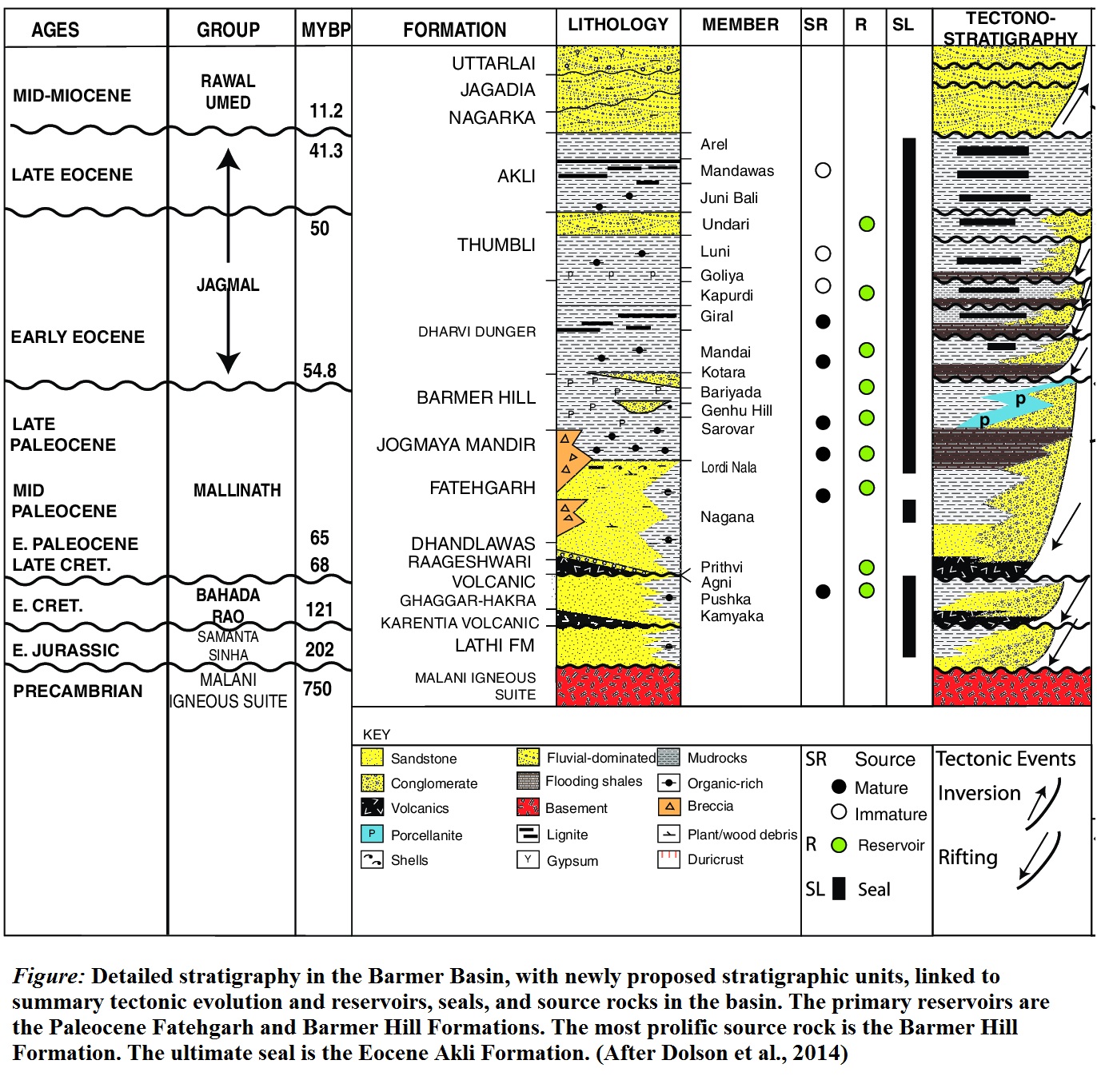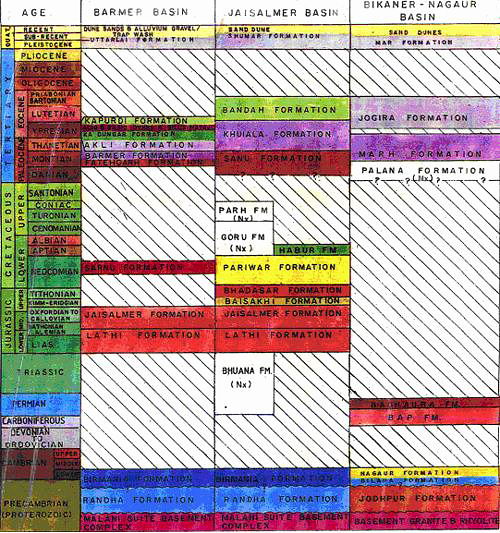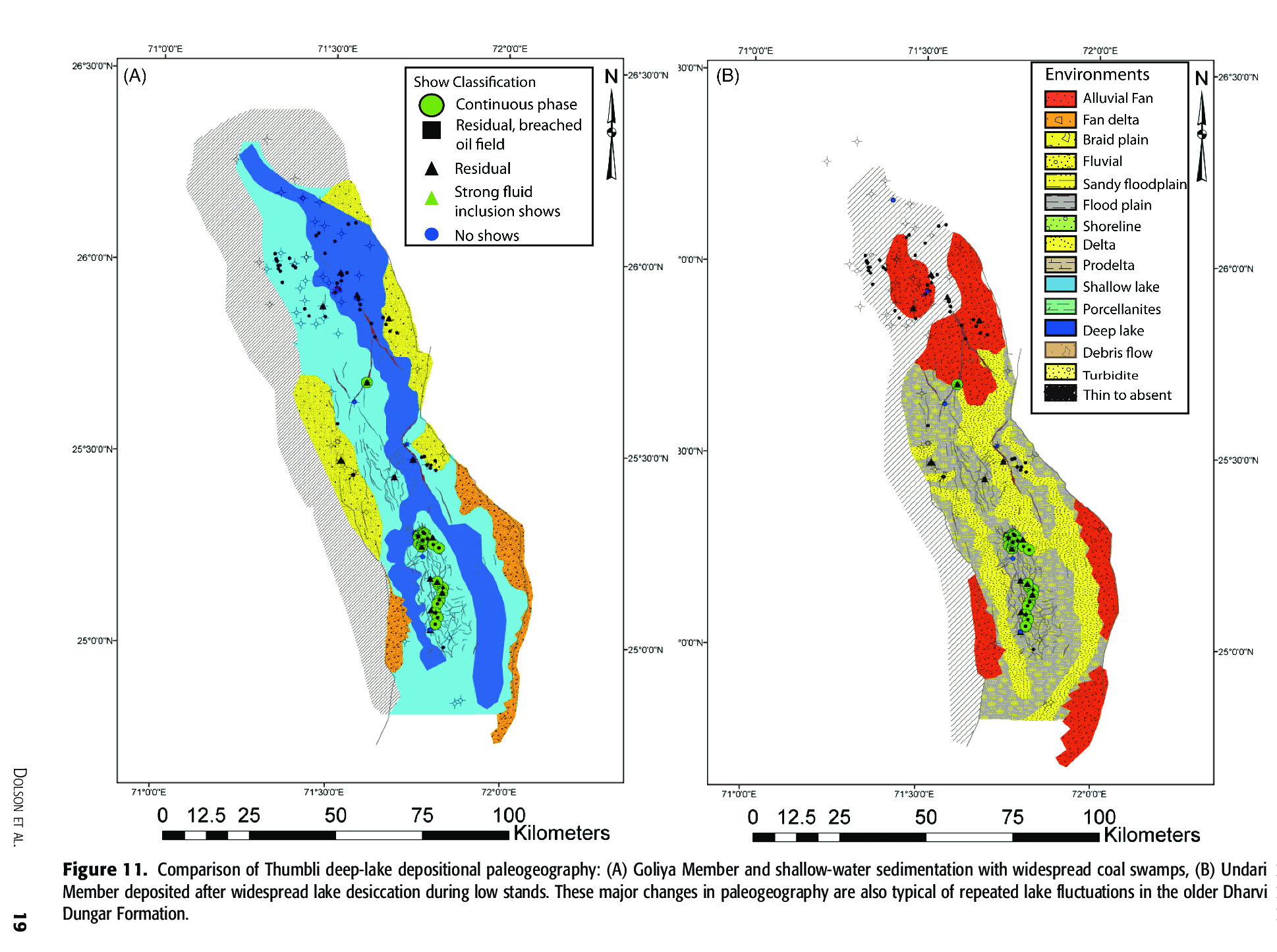Thumbli Fm
Type Locality and Naming
SUBSURFACE: [Referred Publication: John Dolson, Stuart D. Burley, V.R. Sunder, V. Kothari, Bodapati Naidu, Nicholas P. Whiteley, Paul Farrimond, Andrew Taylor, Nicholas Direen, and B. Ananthakrishnan, 2015 : The Discovery of the Barmer Basin, Rajasthan, India, and its petroleum geology : AAPG Bulletin, 99 (issue 3, 1 Mar 2015), pp. 433-465; https://doi.org/10.1306/10021414045]
Lithology and Thickness
Claystone. Comprised of lacustrine shales with lignitic coals. The reservoir seldom reach more than 10 m in thickness and is commonly 3-4 m thick. It consists of 4 members: Undari Member, Luni Member, Goliya Member, Kapurdi Member.
[Figure 1: Detailed stratigraphy in the Barmer Basin, with newly proposed stratigraphic units, linked to summary tectonic evolution and reservoirs, seals and source rocks in the basin. The primary reservoirs are the Paleocene Fatehgarh Fm and Barmer Hill Fm. The most prolific source rock is the Barmer Hill Fm. The ultimate seal is the Eocene Akli Fm (Dolson et al., 2015)]
Relationships and Distribution
Lower contact
Unconformably overlies the Dharvi Dunger Fm.
Upper contact
Unconformably overlain by the Akli Fm.
GeoJSON
Fossils
Occasional presence of dinoflagellates
Age
Depositional setting
Additional Information
Paleogeographic reconstructions of the Thumbli Fm members are instructive in representing the cyclic nature of these Eocene lake shale and coal cycles.


